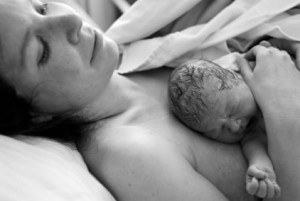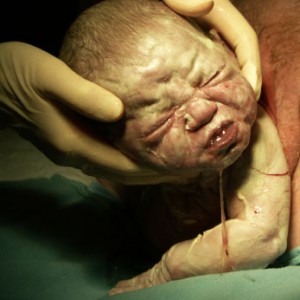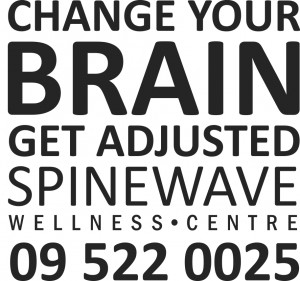“Mia always leaves with a smile and I don’t know where I would be today had I not taken her to Spinewave.”
 Again and again we iterate the importance of the upper neck at Spinewave. Your upper neck houses the brainstem which controls almost every natural function of the body: heart, lungs and bowels. For many it’s a difficult concept that tiny misalignments can wreak such havoc with the entire function of the body, even in young children. But they do.
Again and again we iterate the importance of the upper neck at Spinewave. Your upper neck houses the brainstem which controls almost every natural function of the body: heart, lungs and bowels. For many it’s a difficult concept that tiny misalignments can wreak such havoc with the entire function of the body, even in young children. But they do.
The trauma from birth can be the start of a lifetime of problems for many if cranial and spinal misalignments are not addressed sooner than later. There are many factors that contribute to birth trauma: a long labour, the use of drugs to increase contraction intensity, vacuum extraction or forceps, caesarean section because of lack of progress (as in this case), cord around the neck or incorrect positioning of baby during birth.
In a study by Guttmann1, a researcher who examined the effects of the birth process in more than 1000 infants, it was concluded that approximately 80% of all newborns had some form of nerve dysfunction. He commented that many health problems may arise from misalignments of the first vertebra in the neck, including lower resistance to infections of the ear, nose and throat. He noted, however, with the lightest pressure of the index finger (adjustment) to this bone, the infant’s clinical picture normalised.
Dr Abraham Towbin, a Harvard University pathologist, found evidence of spinal injuries as a result of the birthing process2. Brainstem and spinal injuries at birth were attributable to excessive pulling, bending and twisting, with subsequent bleeding into the space around the spinal cord being the most frequent indication of spinal injury. He reported that when this occurs, the nervous system’s respiratory centres are damaged, leading to respiratory depression, shock or even death.
Dr H Biedermann, a medical doctor from Belgium, who for over 40 years has advocated the importance of spinal examinations for newborns, found that strain of the muscles of the neck at the base of the skull were due to birthing injuries from prolonged labour and the use of extraction devices3.
 Undetected nerve dysfunction associated with birth trauma may result in4:
Undetected nerve dysfunction associated with birth trauma may result in4:
- Breathing weakness
- Irritability
- Vomiting
- Colic
- Sleeping problems
- Feeding problems
- Developmental delays
For more on the importance of the child’s upper neck and child wellness, click HERE.
Pregnant? If you are an expecting mum, click HERE.
 I had an extremely long labour that wasn’t progressing and after 50 hours they decided to do a C-section: Tiring and stressful for both mummy and baby.
I had an extremely long labour that wasn’t progressing and after 50 hours they decided to do a C-section: Tiring and stressful for both mummy and baby.
I was having some problems with my baby, Mia, since she was about 5 weeks old. Her symptoms were refusing to feed, vomiting, poor sleeping, screaming, acid reflux, arching her back and would not like to be flat on her back.
Doctors put her on medication. I was very reluctant to touch medication unless absolutely necessary, let alone giving it to a newborn baby! I felt it was absolutely necessary though.
The medication helped in some regard but was not the solution to the underlying problem. Doctors then thought it may be a dietary issue as she was a breastfed baby, which after putting her through some painful blood tests the results were negative.
She then also suffered severe constipation and wouldn’t go “number twos” without having some medication to help her go and this would be for at least 10 days and sometimes 2 weeks at a time.
After ages of going round in circles, trying everything including an osteopath, I decided to try a chiropractor; anything that will help my baby (which I wish I had done sooner!!!)
Neil and Pip were amazing, helpful, supportive and friendly!
Mia responded extremely well to her adjustments. She went off her medication and symptoms have dramatically eased. Mia always leaves with a smile and I don’t know where I would be today had I not taken her to Spinewave. I truly believe that Neil’s technique has significantly improved the health and happiness of my daughter, so much so, that I have started to have treatment myself, which again is helping me too.
I will and have been recommending anyone and everyone. Thanks Neil and Pip!
Gen & Mia
References:
- Gutmann, G. Blocked atlantal nerve syndrome in babies and infants. Manuelle Medizin. 25:5-10.1987.
- Towbin, A. Latent spinal cord and brainstem injury in newborn infants. Dev Med Child Neurol. 11:54-68. 1969.
- Biedermann, H. Kinematic imbalance due to suboccipital strain in newborns. Manuelle Medizin. 6:151-6. 1992.
- Barham-Floreani, J. Well Adjusted Babies, Second Edition. Vitality Productions Ltd. 2009.
© Dr Neil Bossenger 2012

